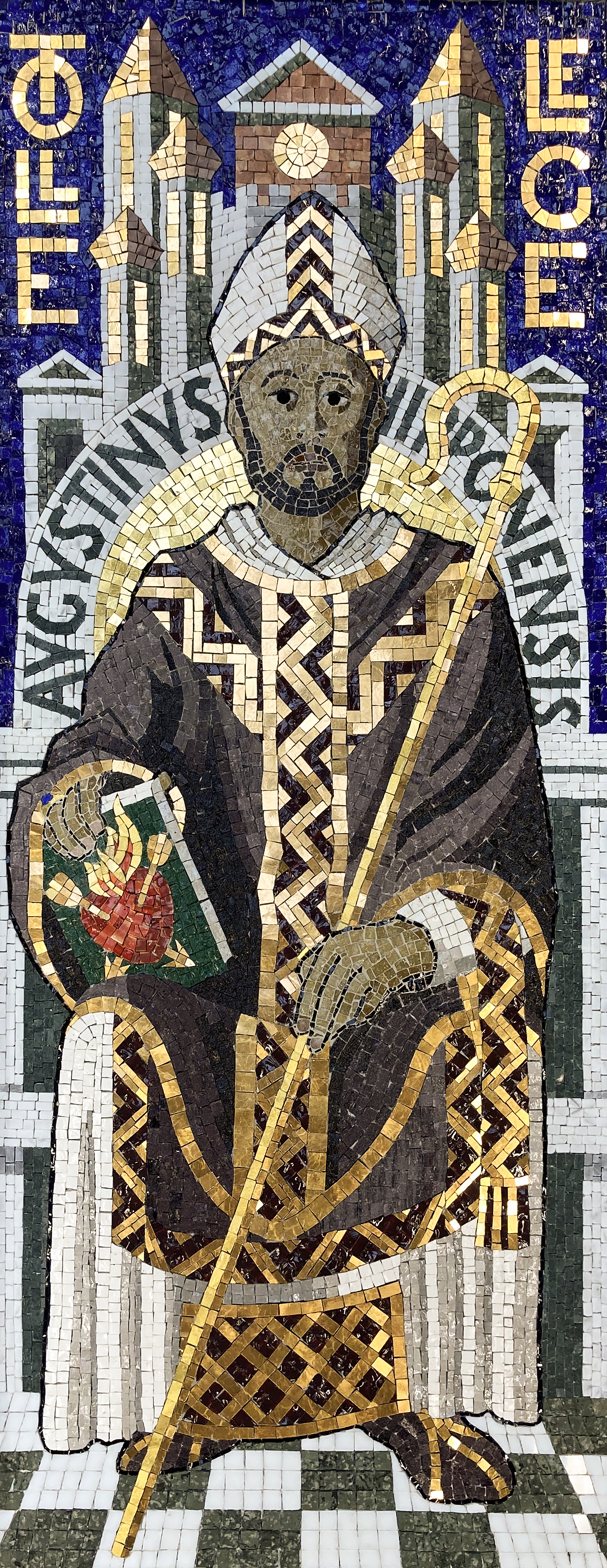Westminster Cathedral: Mosaic panel of St Augustine of Hippo (354-430) for the Chapel of St Paul.
The saint is seated beneath a canopy of tabernacle-work. This canopy is a symbolic representation of the City of God which is the subject of Augustine’s most important work of Christian philosophy, De Civitate Dei. The depiction of the saint is not intended to be an historically authentic image. His vestments are later mediaeval in character to allow the gold orphreys and other decorative borders of that period to enliven the design. Three different types of gold are used. The saint’s colouring and facial type express his probable Berber descent.
On either side of the tabernacle-work are the words ‘Tolle Lege’ (‘Take up, read’), heard by the saint as a child’s voice whose source could not be identified. The text which it encouraged him to read was the Epistles of St Paul and the passage that he lighted upon was Romans 13:13-14. This text inveighs against earthly passions and encourages readers instead to clothe themselves with the Lord Jesus Christ. Its authorship accords with the location of this mosaic at the entrance to St Paul’s chapel. Augustine’s emblem, a flaming heart pierced by arrows is also symbolic of the penetration of the passionate human heart with the desire to know and love God. It is here combined with a book representing Augustine’s status as the author of the Confessions, De Doctrina Christiana and De Civitate Dei, as well as the decisive impact of reading the Pauline Epistles on his faith and ministry.
The mosaic is executed in mixed media. White Carrara and Verona Green marble tesserae are used for the throne, the architecture, and the chequered floor. This helps to integrate the design with the frame and with the green and white marble cladding of the Cathedral’s surrounding dado walls. Marble makes a particularly satisfying contrast with adjacent areas of gold. The rest is in Venetian glass smalti. The mosaic was executed mainly by the indirect method, but the face and hands are in the direct method.
Gary Bricknell of Mosaic Restoration in Daventry made the mosaic to the artist’s designs.
The mosaic has been installed in memory of the life and ministry of Canon Christopher Tuckwell.

St Augustine mosaic